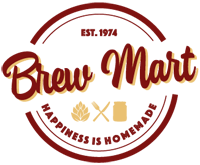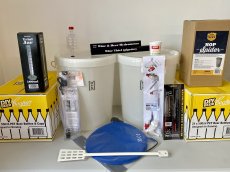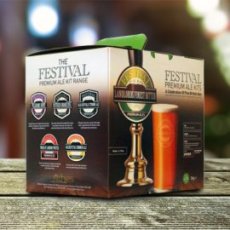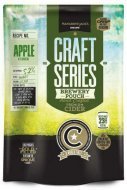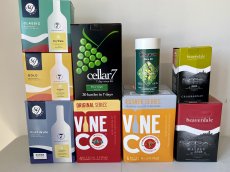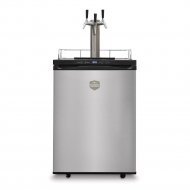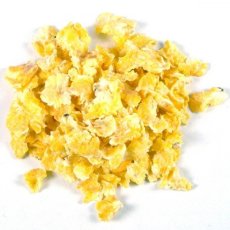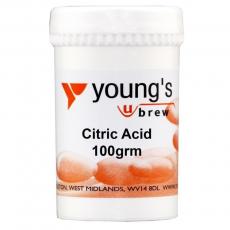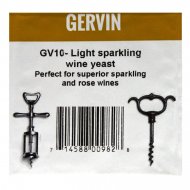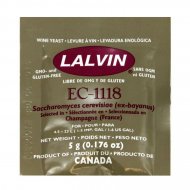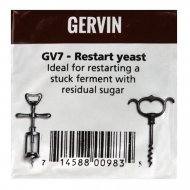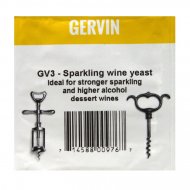Sign up to the Brew Mart newsletter for the latest news, offers & more
Please note that Brew Mart will be closed on Saturday, 5th July, AND Saturday, 12th July. Thank you.
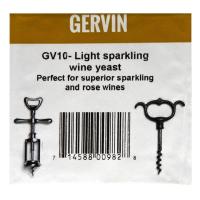
Champagne Yeast
Brew Mart has several yeasts suitable for making sparkling wines. Including the high-quality Lalvin EC-1118 champagne yeast and the GV3 and GV10 yeasts from Gervin. All sparkling wine yeasts have slightly different qualities. Some can produce more robust wines with a higher ABV, some preserve more natural sweetness, and all bring out moderately other flavour characteristics.
As a general rule, the better the champagne yeast, the better or more pronounced the flavours.
What is champagne yeast?
What's the difference between champagne yeast and regular yeast?
Sparkling wine yeasts release gasses slower than bread yeast during fermentation. The fermentation of bread yeasts is more dynamic and works better under more active conditions.
Champagne Yeast is a single-celled fungus capable of converting sugar into alcohol and carbon dioxide. Brewing yeast is either liquid or dry and should not be eaten raw.
Champagne yeast is responsible for turning the wort into the desired sparkling wine. The wort or liquid contains the sugars which react with the yeast.
Champagne yeast is best suited for dry wines, cider, champagne, and fruit juices and is a clean, neutral yeast.
Champagne yeast finds its optimum temperature at 60-75 degrees Fahrenheit or 15-24 degrees Celsius.
Attenuation and Flocculation
When brewing with a sparkling wine yeast there are many variables to consider.
- Flocculation, see how quickly the yeast settles and clumps together at the bottom of the fermentation vessel.
- Strains of yeast with higher flocculation will quickly settle out of the beverage upon completion of fermentation.
- Champagne yeast has medium to low flocculation, taking longer to settle.
- Attenuation refers to the yeast's percentage of sugar converted to carbon dioxide and ethanol. Yeast strains, on average, attenuate 65-80 per cent.
To find the attenuation, compare the wines original gravity and final gravity.
Champagne yeasts typically attenuate around 75 per cent.
- 76%-80% = High Attenuation
- 71%-75% = Medium Attenuation
- 65%-70% = Low Attenuation
It is now becoming fashionable to use a sparkling wine yeast in various beer styles.
Many brewers use Champagne yeast in tandem with another strain when brewing beer. For example, you first ferment your ale with a Belgian yeast before being finished with a sparkling wine yeast.
Champagne yeast is a great crossover style perfect for beer lovers and non-beer fans to enjoy together. A sparkling wine yeast strain offers several unique upsides.
The yeast handles alcohol well, and it can take levels above 15% abv.
Most ale and lager strains top out at 10–12% abv.
Moreover, the microorganisms can clean up any cloying sweetness.
Champagne yeasts are very hearty eaters. They will dry out a beer.
